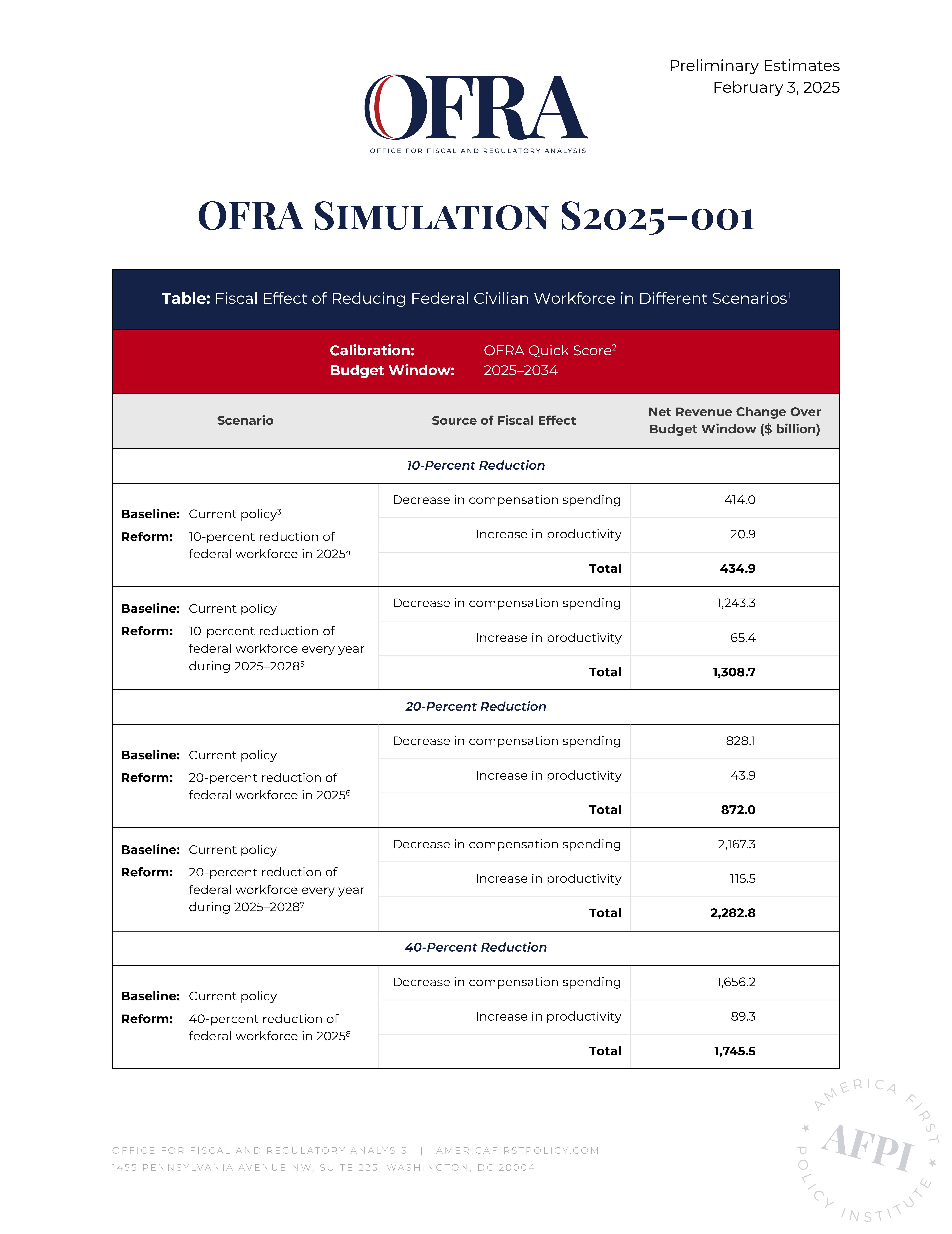February 3, 2025
OFRA Simulation S2025–001
Fiscal Effect of Reducing Federal Civilian Workforce in Different Scenarios
Contents:
10-percent reduction of federal workforce in 2025
10-percent reduction of federal workforce every year during 2025-2028
20-percent reduction of federal workforce in 2025
20-percent reduction of federal workforce every year during 2025-2028
40-percenty reduction of federal workforce in 2025
